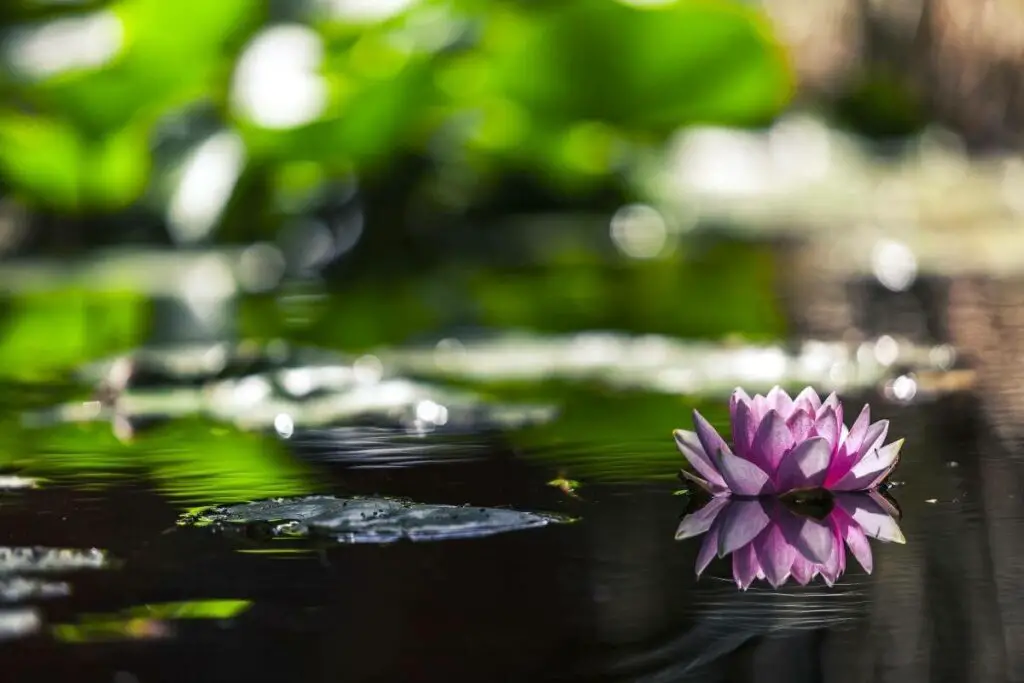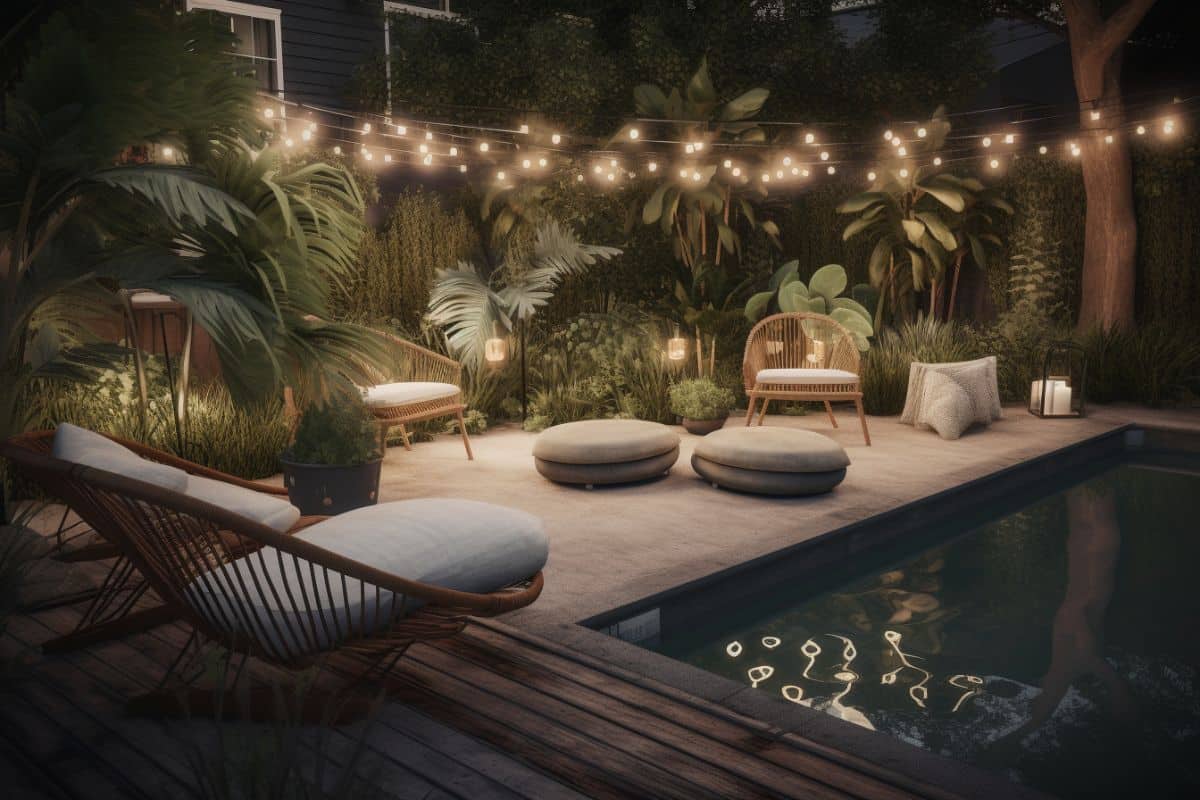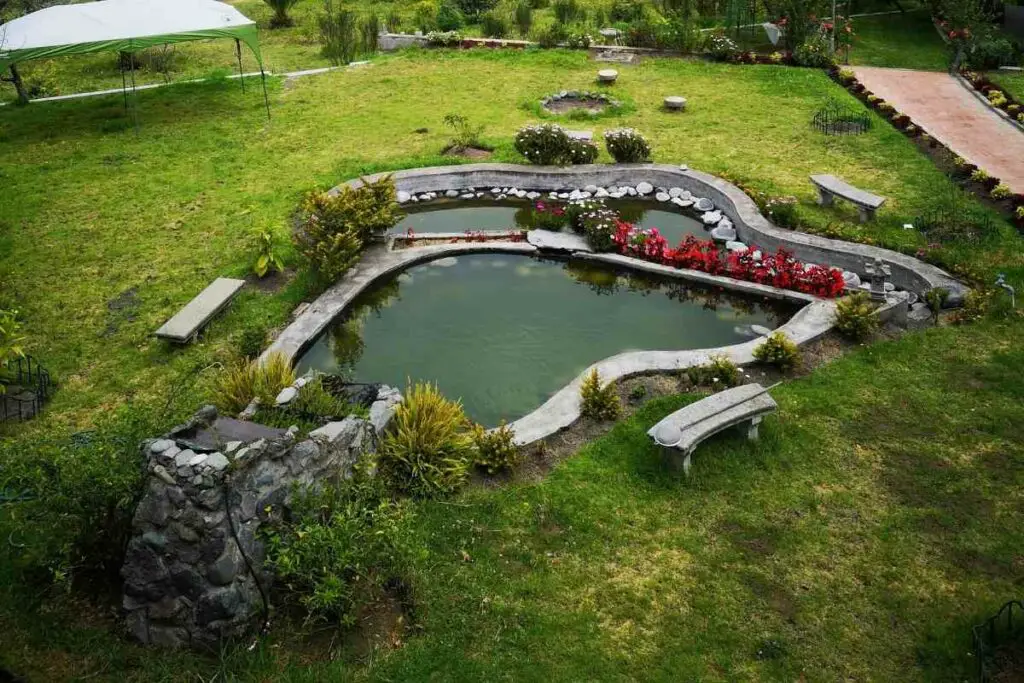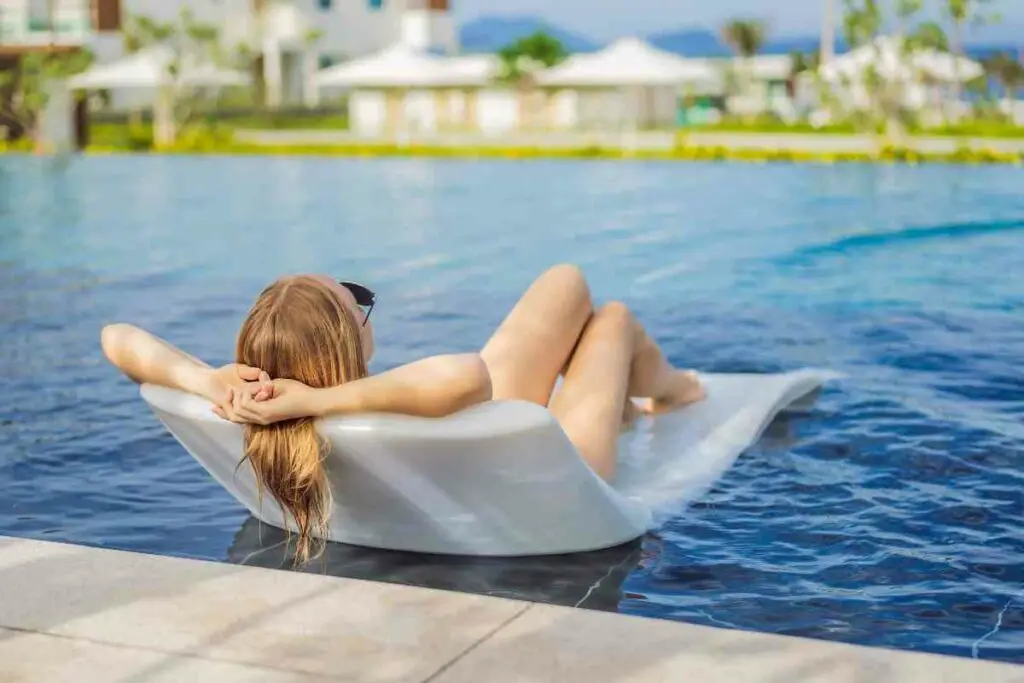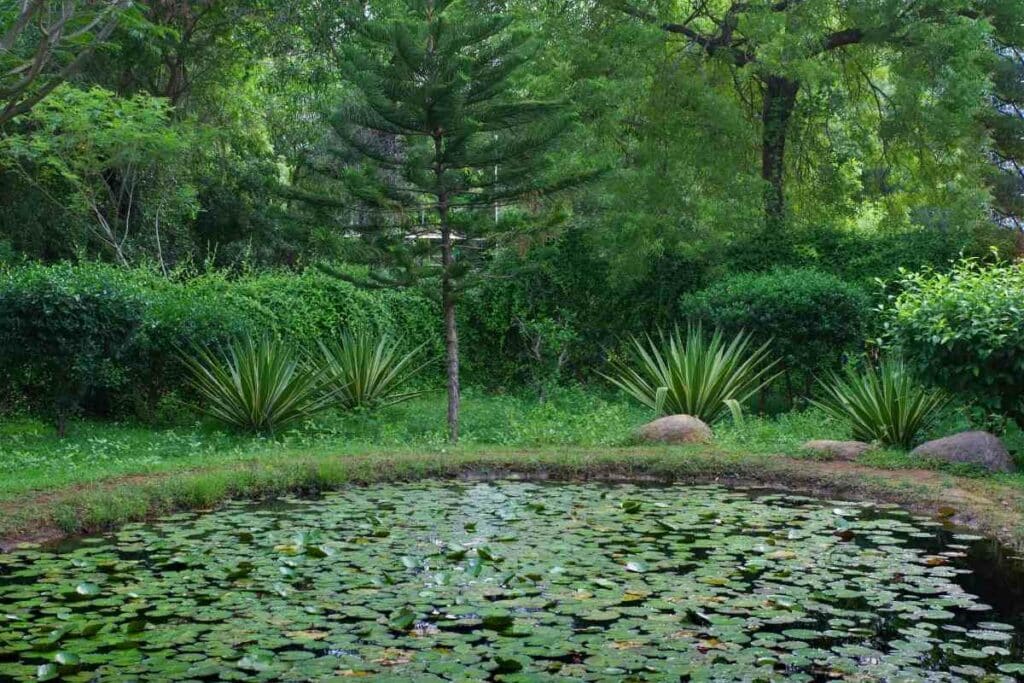If you’ve recently created your own wildlife pond, you’re sure want some pond edging done as well.
This will enhance both the practicality and the beauty of your pond. Learn 10 of the best wildlife pond edging ideas, below!
How Do I Cover the Edges of My Pond?
So, you’ve heard pond edging mentioned (or maybe this is your first time hearing of it).
What does this mean, and what purpose does it serve?
Pond edging is virtually anything (within reason) that you could use to edge your pond with.
This is for the purpose of increasing the aesthetic and/or convenience of your pond somehow.
Take a look!
1. Plants
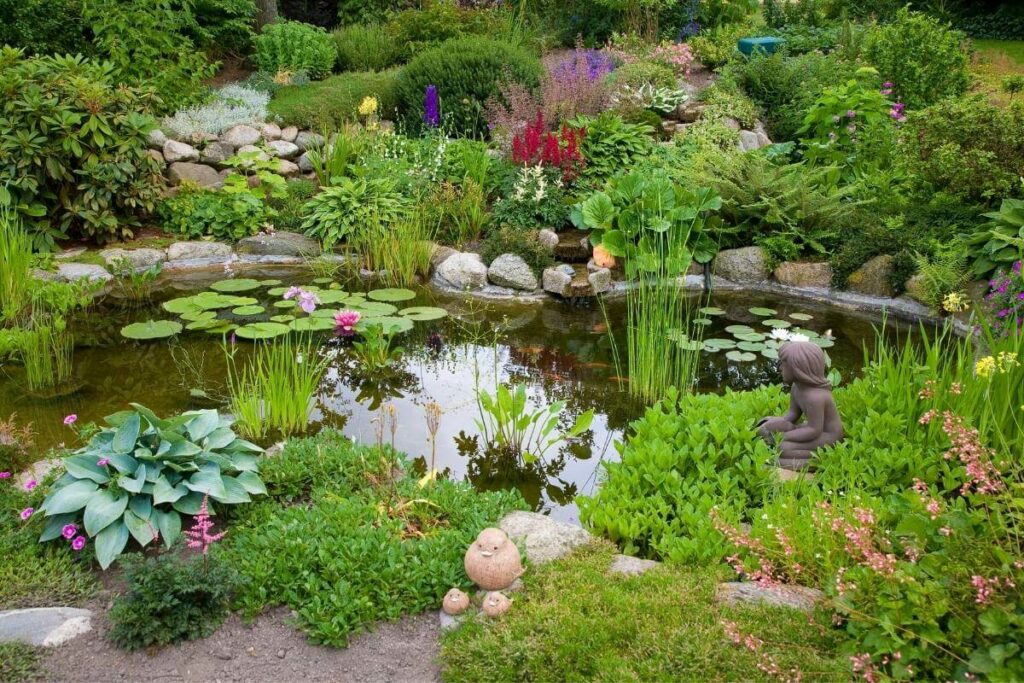
If you’ve gone to the trouble to create a wildlife pond, you’re likely a fan of the natural look.
Plants can be used to create edging that looks perfectly natural. They can also provide shade, sustenance, and fresh O2 for any pond critters you may have (such as the ever-popular koi).
What’s more, there are many beautiful water-loving plants to choose from.
Some of these will even trail artfully into the water:
- Blue flag Iris
- Swamp Milkweed
- Ferns (various varieties)
- Stonecrop
- Creeping Jenny
- Watercress
- Elderberries
- Marsh Marigold
- Blueberries
- Purple Lobelia
- Passionflower Vine
- Creeping Zinnia
- Water Hyssop
- Cardinal Flower
2. Logs/Driftwood/Timber
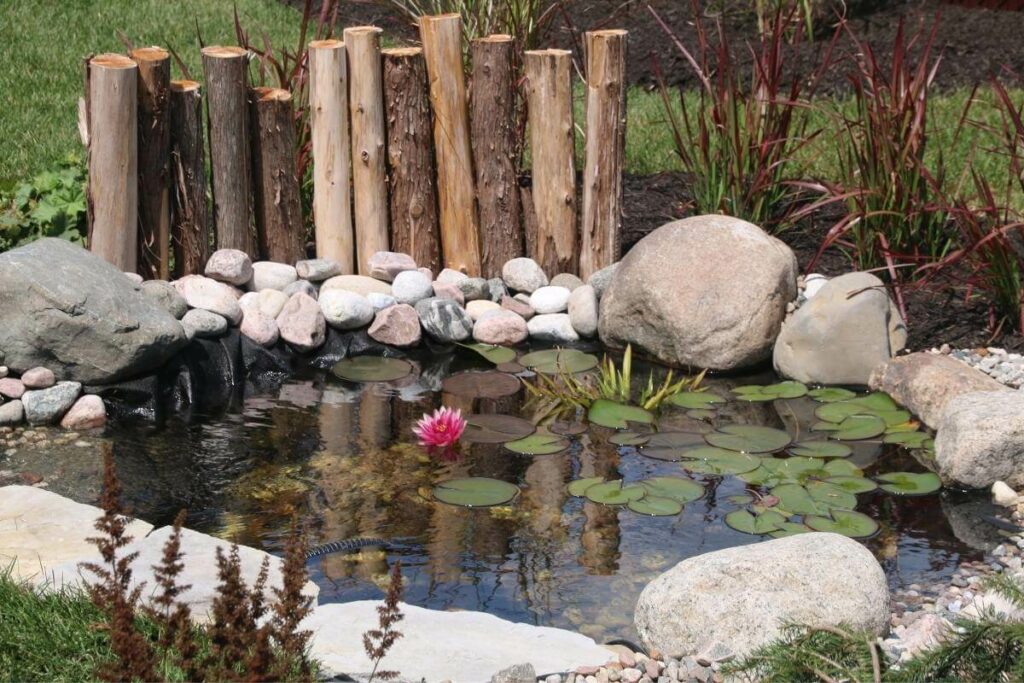
If you’d like a more hand-crafted but rustic appearance, you could always edge your pond with logs, driftwood, or timber.
These will cover the bare edges of the pond with some natural-looking decor!
Driftwood, if you can get a hold of it, is also an exceptionally environmentally-friendly option (as it is collected from trees already fallen).
Last but not least, this can give your pond a very neat and unique look!
3. Hardwood

Hardwood (such as bamboo, maple, pine, or cherry), might be the way to go if you’re looking for a more manicured edging look.
These will allow you to provide a neat, geometrical outline in place of the rougher, more natural shape of the pond and liner.
This will also allow you to keep any pond-edging plants from growing out of the water and becoming unruly.
Essentially, hardwood has a classy appeal, and it will help you keep several aspects of your pond in check.
Hardwood for wildlife pond edging is also limited in the sense that it’s much easier to form squares, triangles, and shapes that are angular.
For a pool with a smooth, round edge, you might want to go with concrete, brick, or rock!
4. Small Trees
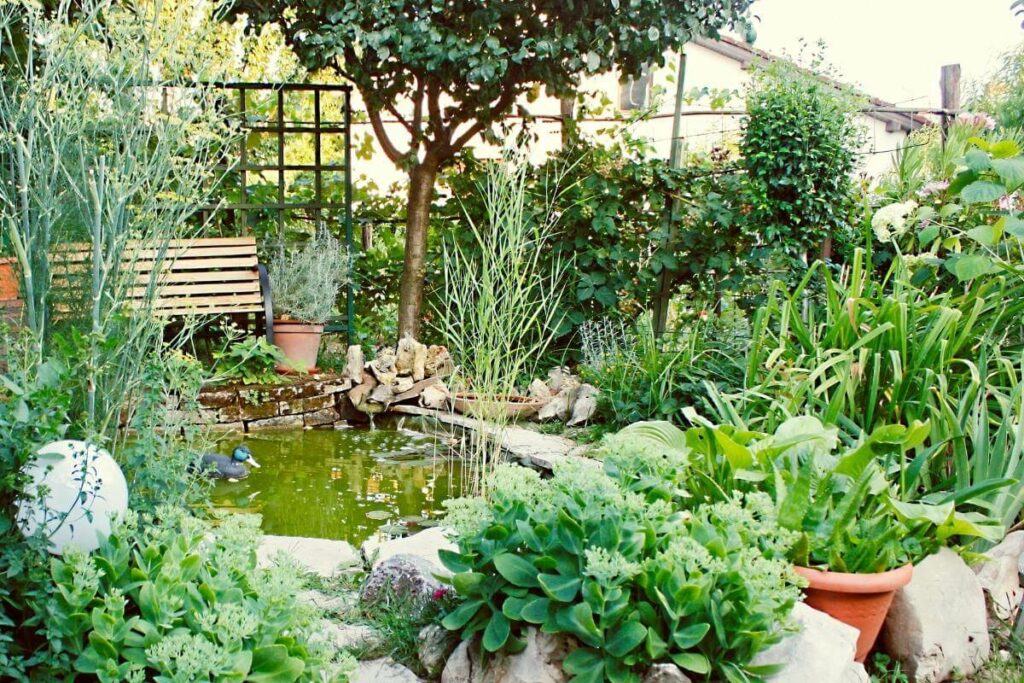
You can use small trees to transform your wildlife pond into a tiny oasis.
The trees will increase the beauty exponentially while providing shade and protection to any critters you might have in the water.
In fact, there are many birds, insects, and other wildlife that rely on trees for feeding, breeding, habitat, and general survival.
The primary downside to edging your pond with small trees is that you may need to clean out leaves or bugs that fall in the water.
You’ll also want to avoid toxic tree varieties, such as cherry, ginkgo, and black walnut.
Otherwise, they can unintentionally poison the wildlife and/or the pond water!
Instead, the following trees make excellent, wildlife-friendly pond edging and decor:
- Willow
- Dogwood
- Red Maple
- Water oak
- Willow oak
- Magnolia
- Juniper
5. Stones
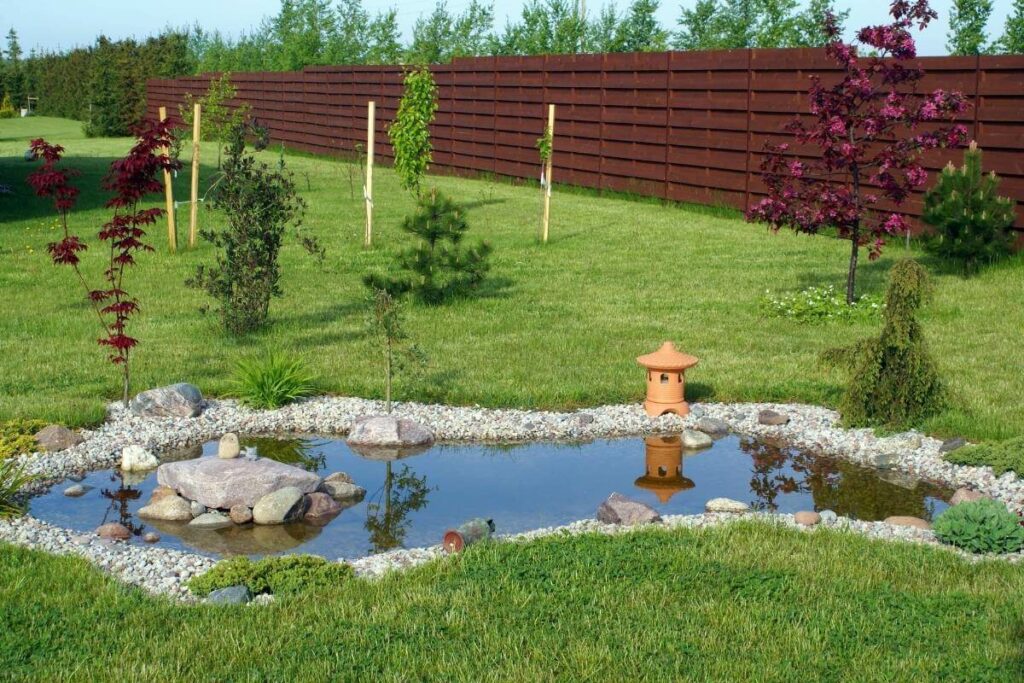
Stones can be a wonderful blend of the man-made and the natural.
They typically come in natural shapes, yet you can stack them into whatever you prefer!
This means that stone edging can be quite useful for creating rounded shapes, like ovals, peanuts, circles, etc.
So, stones are super-customizable compared to some, without sacrificing that highly sought-after ‘nature in my backyard,’ look.
Stones can also come in various colors, allowing you to further customize them as decor!
6. Boulders
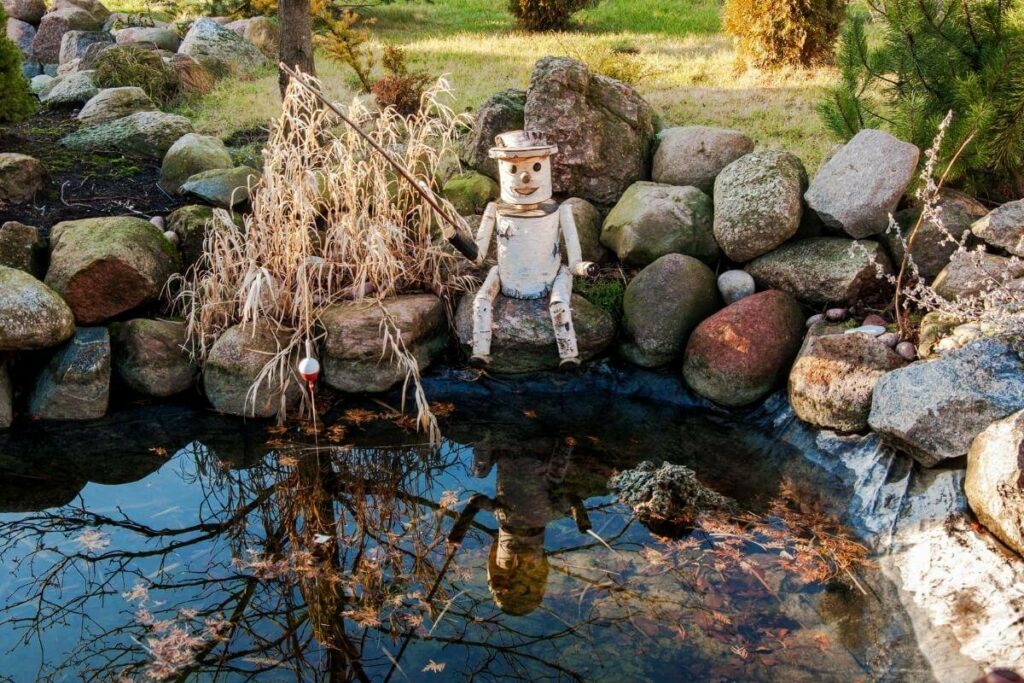
Boulders are a fantastic, all-natural-looking way to edge your pond with minimal detail-work.
A few well-placed boulders can create the look of a natural alcove, where a pond just happened to pool.
You can also cover the boulders in climbing plants and vines, like stonecrop or vining passionflower, for an outright idyllic look!
7. Concrete
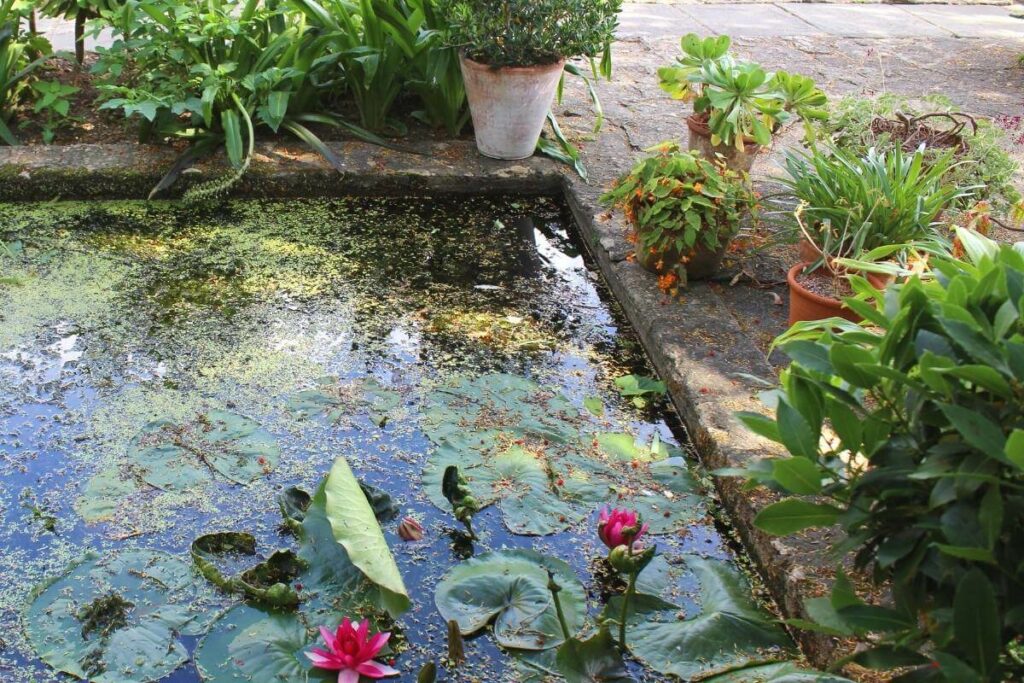
Concrete probably does not sound like the most natural option, and it’s not.
This being said, it can still be used to – quite quickly and efficiently – create the customized shape of your preference.
This makes it much easier to follow the natural contours of the pond, so in its way, still creates a harmonious and natural appeal.
8. Tiles
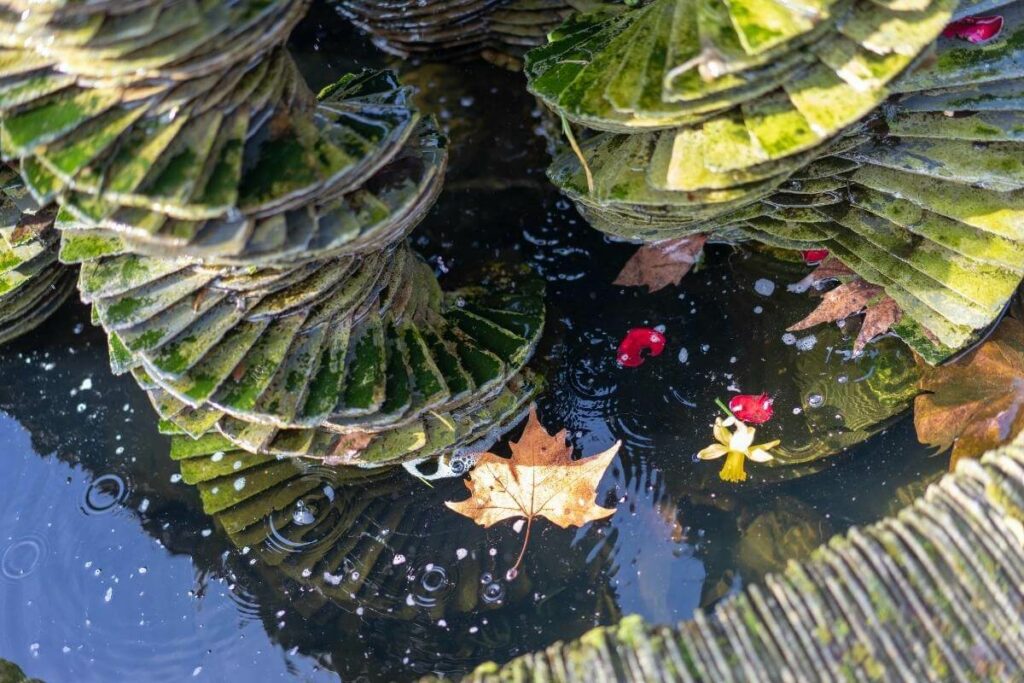
If you don’t care for raised pond edging, you can always use tiles to edge it.
This is less of a method of control, and won’t create wildlife habitat, but it can create some exceptional decor!
9. Brick
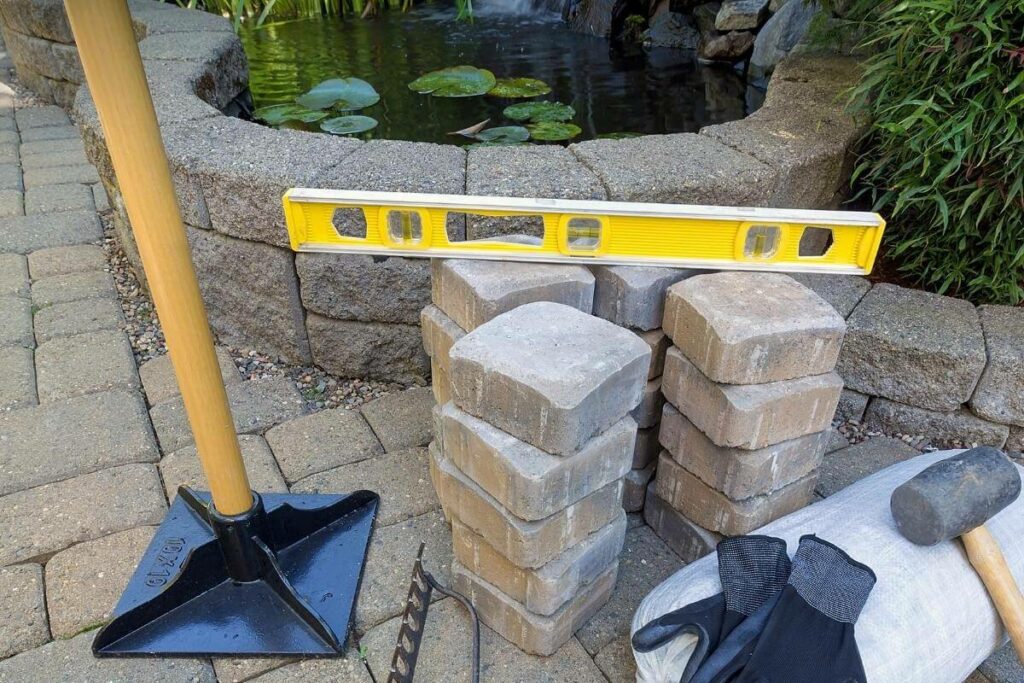
If you’re looking for edging with a delightfully modern style, with a classic appeal, look no further than brick.
Brick has a classy appearance and can be arranged into almost any shape (to suit the unique contours of your wildlife pond).
You can go for a classic auburn brick color, or opt for something more subtle, like tan, off-white, or stone-gray.
The main downside to brick is that it can be a bit costly, at least compared to simple driftwood, concrete, or rock.
10. Lawn
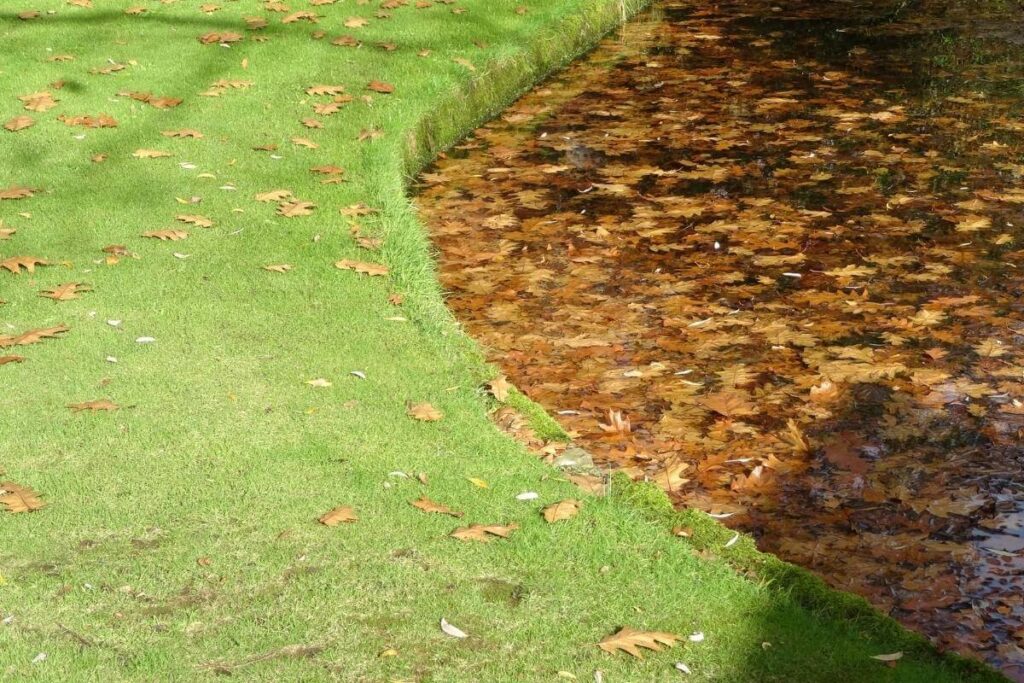
Another simple yet effective option for pond edging is a good old-fashioned lawn.
Of course, this can make the area around the pond a bit trickier to mow. To counteract this, you may wish to allow the grass to grow tall along the edges.
This will encourage dragonflies and other water-loving beauties to stop by (as they will have somewhere to perch above the water).
Keep in mind that tall grass will also encourage mosquitoes, however!
If you have a mosquito problem, you may want to keep it cut (or incorporate mosquito fish and other mosquito-eaters into your pond wildlife as well).
Include Rocks and a Slope so Visiting Wildlife is Safe to Drink
For small critters, drowning in a pond can be a real risk.
To avoid this tragic occurrence, you can give the edging a slope. This way, it won’t be a dropoff, and the critters can get out if they fall into the water.
A slope will provide the perfect place for them to drink. It’s also advisable to provide a few rocks with flat surfaces that stick just an inch or so above the water.
This way, baby birds and other less skillful swimmers will be able to pull themselves out onto a rock!
Final Thoughts
So, there you have it: 10 of the best wildlife pond edging ideas.
Did any of them catch your eye?
Perhaps you like the idea of well-manicured, hardwood edging; or perhaps you’d prefer plants or trees, and their idyllic, natural look.
Best of luck!
